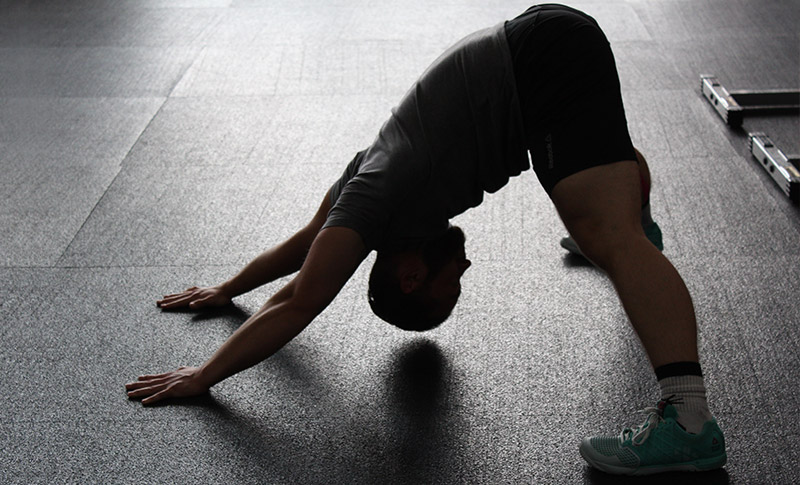Stretching is a fundamental component of maintaining your overall wellness. Studies show there are many benefits to stretching – such as avoiding injuries due to pulled muscles, improving performance in sports and other physical activities, and facilitating comfortable movement as your joints age. When done right, stretching can be relaxing and increase flexibility. However, these benefits can only be enjoyed if stretching is done properly.
Although it may seem straightforward, stretching mistakes are all too common. Improper technique can lead to injury and pain. Take note of these common mistakes as you integrate stretching into your daily routine:
#1) Not warming up
You may think of stretching as a warm-up before physical exertion, but you actually need to warm up BEFORE you stretch. A pre-stretching warm-up will increase your body’s core temperature to make muscles more pliable and generate blood flow to the muscles and connective tissue.
Your warm-up should consist of light aerobic activity – like jogging in place, jumping jacks or a brisk walk – to prepare your muscles to be stretched and for more intense exercise to follow. The goal of your warm-up is to raise your heart rate and respiratory rate enough to increase blood flow. This activity will loosen the muscles, increasing the benefits of stretching and helping you avoid injury that can be caused by a cold stretch.
#2) Using improper stretching techniques
Another mistake many make when stretching is doing the wrong type of stretch at the wrong time. There are multiple styles of stretching. Choosing the correct one for your fitness level and for the activity in which you plan to engage will help you avoid injury during your stretch and workout.
Dynamic stretching
This type of stretching involves moving through your entire range of motion without holding an end position. Dynamic stretching uses moving stretches to mimic movements you’ll be performing during your workout. It can be helpful to move through dynamic stretches as part of your warm-up to prepare joints and muscles for static stretching.
Static stretching
When most people hear the word “stretch,” they think about holding a stretching pose for a short period of time. This is static stretching – performed by lengthening a specific muscle until you feel tension, then holding that position. Static stretches are best after a workout to help relieve muscle fatigue and decrease recovery time.
#3) Overstretching your muscles
Stretching should never be painful. Exerting too much energy or going too deep into a stretch can result in a torn muscle. Slowly ease into your stretches. You may feel slightly uncomfortable during a stretch, but it should never hurt. Don’t push your body past its limits, and always stay in your natural range of motion. If you notice tightness in one muscle area, repeat your stretches multiple times without pushing too hard.
#4) Bouncy stretches
Bouncing while stretching, when done too vigorously, can lead to a pulled muscle. This ballistic motion can trigger the muscle to tighten to protect itself, defeating the purpose of the stretch. Bouncing while stretching can also cause you to stretch too deeply.
Instead of bouncing, gradually elongate into the stretch. Hold the stretch for 10 to 15 seconds, release and repeat. You may also practice dynamic stretching, moving through your full range of motion, rather than bouncing.
#5) Not stretching often enough
Stretching is important for everyone! The goal of stretching for the average person is to maintain flexibility and mobility in your joints and muscles. Not stretching enough can cause your muscles to shorten, thereby limiting movement and increasing stiffness and discomfort. Adding moderate stretching to your daily routine helps you move with ease and reduces chronic pain.
For athletes, proper stretching is essential to preventing injuries and performing at your highest level.
#6) Holding your breath while stretching
Believe it or not, conscious breathing makes stretching more effective. Many people unintentionally hold their breath while stretching, which can cause muscles to become tense and resistant. Conversely, breathing increases blood flow and delivers oxygen to the muscles. By breathing deeply and slowly through the nose while stretching, your muscles are more likely to relax and become receptive to the stretch.
#7) Stretching an injured muscle
Contrary to popular belief, stretching an injured muscle will not help with pain and can prolong the healing process. Injured tissues need a break in order to heal.
Rest the injury, and apply heat or ice as needed to aid with recovery. Once your injury has healed, slowly re-introduce low-intensity stretching of the muscle group back into your routine.
When to see an orthopaedic doctor
As a general rule, if muscle pain persists longer than a few days, it is best to seek the advice of an orthopaedic physician. Your orthopaedist can determine the severity of the injury and recommend the best course of treatment.
If you or a loved one are currently experiencing persistent muscle pain, make an appointment with a specialist. Our team of orthopaedic doctors and physical therapists can provide the best treatment options for your injury.






